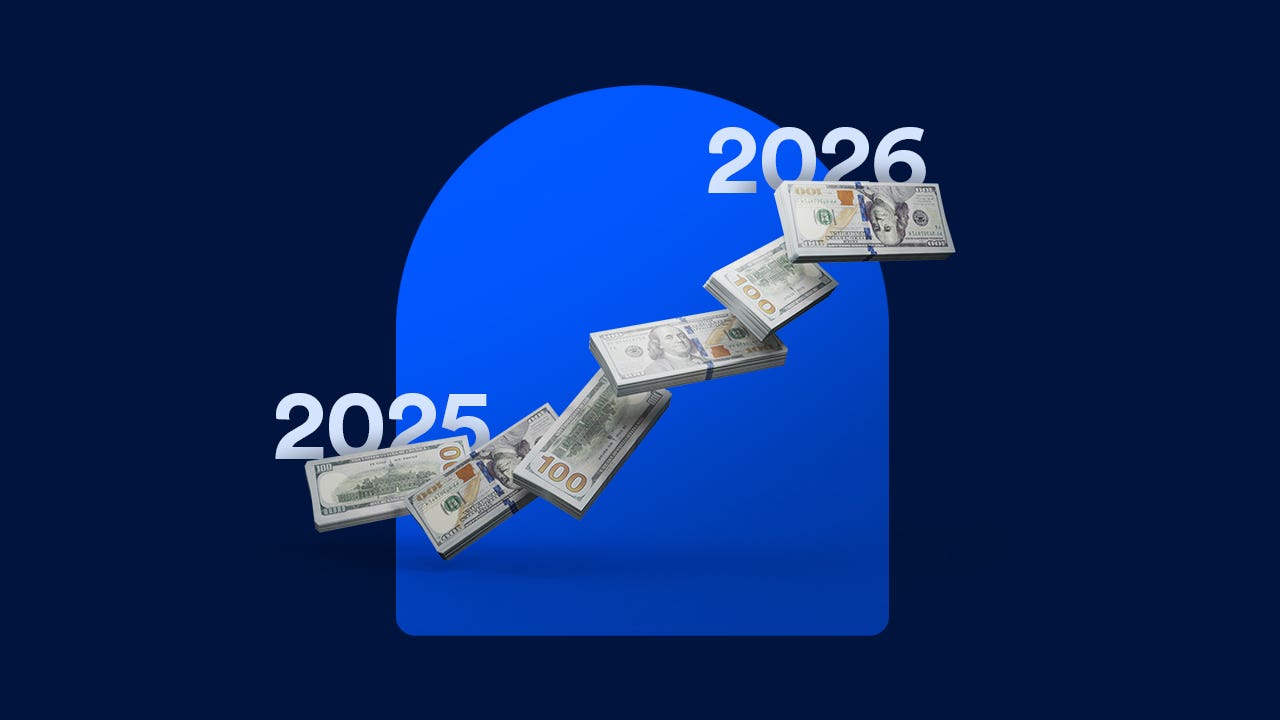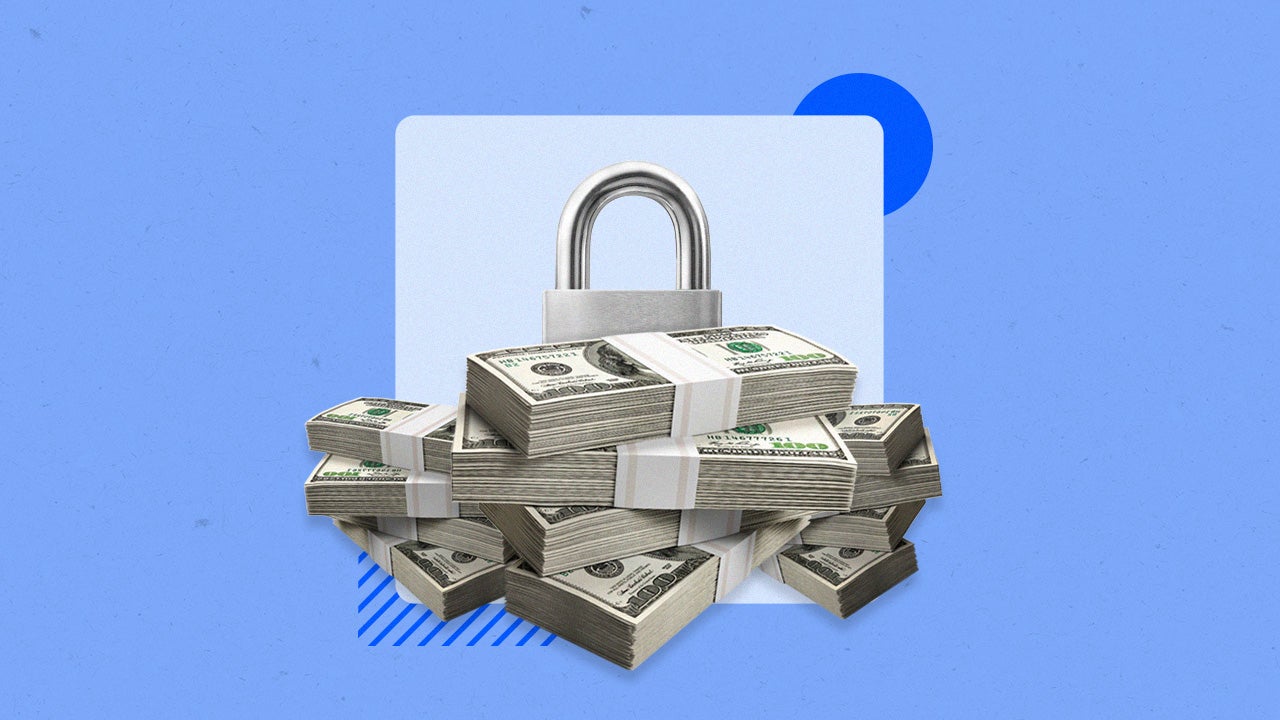Here’s how much investing $10,000 in a CD right now could earn you in 1 year

Key takeaways
- Rates on some one-year CDs are higher than what many savings accounts and money market accounts earn.
- You can find CD rates above 4 percent APY.
- One-year CD rate alternatives include money market accounts and savings accounts.
If you have $10,000 you’re comfortable with locking away for a year, a one-year certificate of deposit (CD) that earns a competitive yield may be a smart choice. Despite recent declines, rates on some one-year CDs are still earning attractive rates.
One benefit of traditional CDs is you can calculate up front how much interest the account will have earned by the time it matures, thanks to its fixed rate of return.
Here we’ll compare what you can earn right now with a one-year CD that pays the national average rate, one that earns a competitive rate, and one that earns the typical rate commonly paid by big brick-and-mortar banks.
| Type of 1-year CD | Typical APY | Interest on $10,000 after 1 year | Total value of CD with $10,000 opening deposit after 1 year |
|---|---|---|---|
| Bankrate partner average | 4.11% | $411 | $10,411 |
| CDs that pay the national average | 1.85% | $185 | $10,185 |
| CDs from big brick-and-mortar banks | 0.01% | $1 | $10,001 |
Bankrate partner average rates and the national average rate may change. Rates are accurate as of February 13, 2025.
Bankrate’s handy CD calculator is a quick way to figure out how much a CD will be worth at maturity, and it simply requires you to input the CD’s annual percentage yield (APY), the term length and the amount of your opening deposit.
National average 1-year CD rates
The national average APY for a one-year CD is 1.85 percent, based on Bankrate research, as of February 13, 2025.
If you deposited $10,000 into a one-year CD that pays this national average rate of 1.85 percent, in one year it would be worth a total of around $10,185.
- Type of account: 1-year CD
- Opening deposit: $10,000
- APY: 1.85%
- Total interest after 1 year: around $185
- Total value of CD after 1 year: around $10,185
Competitive 1-year CD rates
It’s still possible to find banks that pay 4 percent or higher on one-year CDs. A one-year CD with a $10,000 opening deposit that earns the Bankrate partner average yield of 4.11 percent would be worth around $10,411 when it matures in 12 months’ time.
- Type of account: 1-year CD
- Opening deposit: $10,000
- APY: 4.11%
- Total interest after 1 year: around $411
- Total value of CD after 1 year: around $10,411
Online banks currently offering the Bankrate partner average APY on one-year CDs include Limelight Bank and Live Oak Bank.
1-year CD rates from big banks
Deposit account rates have declined at various online banks and many large brick-and-mortar banks have stuck with their rock-bottom yields. For example, you’ll currently earn an APY of 0.01 percent from Chase on any standard CD term. An APY of 0.01 percent on a one-year CD in which you’ve deposited $10,000 will earn around $1 in interest.
You’ll fare slightly better with a one-year CD from TD Bank which earns 1 percent. An APY of 1 percent on a one-year CD in which you’ve deposited $10,000 will earn around $100 in interest by the time the CD matures.
- Type of account: 1-year CD
- Opening deposit: $10,000
- APY: 1%
- Total interest after 1 year: around $100
- Total value of CD after 1 year: around $10,100
How CD rates work
CD rates can fluctuate due to a number of factors. For instance, returns on CDs from competitive banks may correlate with Treasury yields, the federal funds rate, rates offered by competitors and whether the bank is in need of deposits.
Most CDs pay a fixed rate that remains the same throughout the duration of the term, which can make them a good option in a falling rate environment.
“Certificates of Deposit are offered by banks for a fixed term and interest rate,” says Krisstin Petersmarck, president and founder of New Horizon Retirement Solutions. “An example would be a one-year CD that offers an interest rate of 3 percent.”
If you believe rates will be rising, however, you might not want to lock in your funds at a return that won’t be competitive in the near future. A liquid savings account that makes it possible to withdraw the funds anytime may be a better choice in a rising rate environment.
Withdrawing funds from most CDs will result in an early-withdrawal penalty, which can be costly since you’ll lose your interest and maybe even some of your principal.
Specialty CDs such as bump-up CDs or step-up CDs allow for rate changes upon request or at select intervals during the CD’s term. However, the initial rate for such CDs is likely to be lower than the competitive rates offered on fixed-rate CDs.
Alternatives to 1-year CDs
If you want to explore alternatives beyond a one-year CD, you have options. “Some of the common alternatives to CDs are high-yield savings accounts, money market accounts, bonds, and dividend-paying stocks,” says Petersmarck.
Savings accounts
Funds that you’d rather not lock in for a year — such as money set aside for emergency savings or other purchases you intend to make soon — are better off in a place such as a liquid high-yield savings account. These accounts allow you to withdraw money anytime without penalty (although some banks limit the number of withdrawals or transfers per statement cycle).
While you’ll have more liquidity with a savings account than with a CD, a savings account doesn’t provide the guaranteed yield of a CD. If you prefer a fixed rate, you may do better with a CD, as long as you’re comfortable locking in the funds for the entire term.
Money market accounts
Another possible alternative to a one-year CD is a money market account. Like savings accounts, money market accounts don’t require you to lock in your funds for a set amount of time. Unlike CDs and savings accounts, money markets often come with a debit card and check-writing privileges.
You may need to deposit more money into a money market to earn its top rate, however, whereas many CDs don’t have such a tiered structure.
Before choosing a one-year CD over a liquid, variable-rate account like a savings or money market account, consider whether you’re comfortable with locking the money away for a year as well as whether you think rates will fluctuate during that time.
Bottom line
One-year CDs can be a good place to keep money you won’t need for a year, and they offer rates that are guaranteed and money that’s safe, as long as it’s within FDIC limits and guidelines.
Shopping around at different banks that offer one-year CDs can help you find the best APY. The most competitive rates are often found at online banks, which commonly pay yields exponentially higher than the ones earned from big brick-and-mortar banks.






